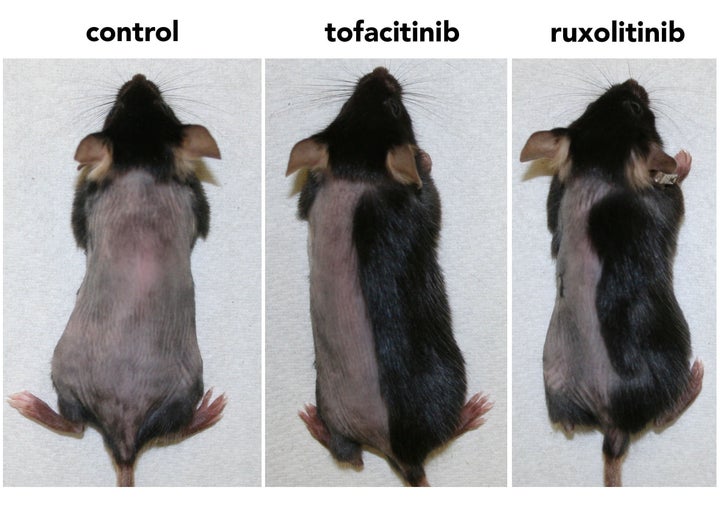No one is claiming a cure for baldness just yet, but researchers at Columbia University Medical Center may have taken an important step in that direction.
In a series of experiments involving mice and human tissue, the scientists showed that enzyme-blocking drugs known as JAK inhibitors can cause significant regrowth of hair when applied to the skin.
The unexpected finding raises the possibility that these medications might be used to restore hair growth in men and women experiencing pattern baldness, as well as in cancer patients who have lost hair as a result of chemotherapy treatments. Oral versions of the medicines have already been approved by the FDA to treat other medical conditions.
"What we've found is promising, though we haven't yet shown it's a cure for pattern baldness," Dr. Angela M. Christiano, associate professor of molecular dermatology at the center and the leader of the new research, said in a written statement. "More work needs to be done to test if JAK inhibitors can induce hair growth in humans using formulations specially made for the scalp."
More work, certainly. But that didn't stop hair loss experts from hailing the new research.
"This is a very exciting discovery," Dr. Nicole Rogers, a dermatologist and hair transplant surgeon in New Orleans, told The Huffington Post in an email. "It would be very exciting if this class of medicines could indeed solve the problem of male and female pattern hair loss. These conditions are the most common causes of hair loss and can be devastating when they occur in very young people."
The discovery grew out of research conducted by Christiano on alopecia areata, a form of hair loss that arises when the body's immune system attacks hair follicles.
When JAK inhibitors were applied to the skin of normal mice whose bodies had been shaved, the mice grew more hair than mice that were given an oral preparation of the drugs. That suggested that the drugs were affecting hair follicles directly rather than simply blocking an errant immune response.
(Story continues below photos.)

Mice treated for five days with the JAK inhibitors ruxolitinib and tofacitinib grew new hair within 10 days (see photos above). No hair grew on untreated control mice during that timespan.
What explains the finding? JAK inhibitors apparently coax normal hairs out of their resting (telogen) phase and cause them to rapidly enter the growing (anagen) phase of the hair cycle, Christiano told The Huffington Post in an email.
The next step would be to conduct clinical trials, according to Christiano. Because the JAK inhibitors that the Columbia researchers tested are already FDA-approved, they could take less time to reach those in need, she said. However, it could still be four or five years before the drugs are commercially available for treating hair loss.
That's if they pan out at all.
Of course, a potent hair-regrowth drug can't come soon enough for many of the 35 million men and 21 million women affected by hair loss in the U.S. While two drugs have FDA approval for the treatment of hair loss, neither is considered a wholly reliable way to grow significant quantities of hair.
A paper describing the research was published in the online edition of the journal Science Advances on Oct. 23, 2015.

